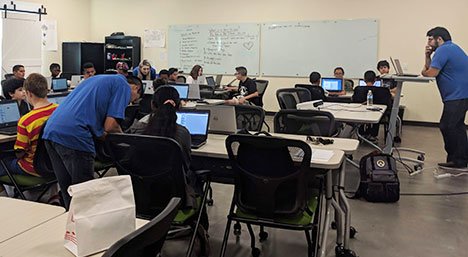Stress Management for Students: Best Relaxation Techniques
Stress management for students the best relaxation techniques to reduce stress, boost focus, and improve academic performance effectively.

Stress management for students is an essential skill in today’s demanding academic landscape. With the increasing pressure to excel academically, maintain social connections, and plan for the future, students often find themselves overwhelmed. Chronic stress can lead to burnout, anxiety, and a decline in overall well-being, making it crucial to adopt effective relaxation techniques. By learning how to manage stress, students can improve their focus, enhance their academic performance, and maintain a healthier lifestyle. This article delves into the best relaxation techniques tailored for students, offering practical strategies to help them navigate their challenges with ease and resilience.
The importance of stress management for students cannot be overstated. Stress is a natural response to challenges, but when left unchecked, it can negatively impact both mental and physical health. For students, this can mean difficulty concentrating, reduced productivity, and even long-term health issues. However, with the right tools and techniques, stress can be managed effectively. From mindfulness practices to physical activities and creative outlets, there are numerous ways for students to relax and recharge. This article explores these methods in detail, providing actionable insights to help students build a balanced and stress-free life.
Understanding Student Stress: Causes and Effects
The modern student faces a unique set of stressors. Academic pressures, such as tight deadlines, high expectations, and competitive environments, are primary contributors. Social dynamics, financial constraints, and the transition to adulthood further compound these challenges. The rise of digital distractions and the constant connectivity of social media also blur the lines between study time and personal time, exacerbating feelings of burnout. Physiologically, prolonged stress triggers the release of cortisol, leading to symptoms like fatigue, insomnia, and weakened immunity. Mentally, it can manifest as anxiety, irritability, or a decline in cognitive function, directly impacting a student’s ability to retain information or perform well in exams. Recognizing these triggers is the first step toward effective stress management.
Mindfulness Meditation: Anchoring the Present
Mindfulness meditation has gained traction as a powerful tool for stress reduction. This practice involves focusing on the present moment without judgment, allowing students to detach from chaotic thoughts. By dedicating just 10–15 minutes daily to mindful breathing or guided sessions, students can lower cortisol levels and improve emotional regulation. Studies show that mindfulness enhances concentration, making it easier to absorb complex material during study sessions. Universities worldwide are incorporating mindfulness programs into curricula, reporting reduced anxiety and improved academic outcomes among participants. For beginners, apps like Headspace or Calm offer structured routines, while practices like body scans or mindful walking can be seamlessly integrated into breaks between classes.
Physical Activity: Channeling Stress into Motion
Exercise is a natural antidote to stress, releasing endorphins that elevate mood and energy. Students often underestimate the value of physical activity, citing time constraints. However, even moderate movement—like a 20-minute walk, yoga session, or dance break—can disrupt the cycle of stress. Yoga, in particular, combines physical postures with breathwork, promoting relaxation and mental clarity. Team sports or gym sessions also provide social interaction, further alleviating feelings of isolation. For those with hectic schedules, micro-workouts—short bursts of exercise spread throughout the day—can be equally effective. Prioritizing movement not only counteracts the sedentary nature of studying but also improves sleep quality, a cornerstone of stress recovery.
Creative Expression: Art, Music, and Writing
Engaging in creative activities offers an emotional outlet for stress. Art therapy, journaling, or playing an instrument allows students to process emotions nonverbally, which is especially helpful for those who struggle to articulate their feelings. Journaling, for instance, helps organize thoughts and identify stress patterns, while drawing or painting can serve as a meditative practice. Music, whether listening or creating, has been shown to lower heart rate and reduce anxiety. Universities often host art clubs or open-mic nights, providing platforms for self-expression. These activities not only divert the mind from academic pressures but also foster a sense of accomplishment and identity beyond grades.
Time Management: Structuring for Success
Poor time management is a common stressor for students. Overcommitment and procrastination often lead to last-minute cramming, amplifying anxiety. Techniques like the Pomodoro Method—25-minute study intervals followed by short breaks—help maintain focus without burnout. Prioritizing tasks using the Eisenhower Matrix (urgent vs. important) ensures that energy is directed toward high-impact activities. Digital tools like Trello or Google Calendar can visualize deadlines, while saying “no” to nonessential commitments preserves time for rest. Importantly, scheduling leisure and relaxation is as vital as academic work; a balanced routine prevents chronic stress from taking root.
Social Support: Building a Resilience Network
Isolation intensifies stress, making social connections a lifeline for students. Talking to friends, family, or counselors normalizes stress and provides fresh perspectives. Peer study groups create collaborative environments that reduce the intimidation of difficult subjects. Many campuses offer counseling services or stress-management workshops, which teach coping strategies in a supportive setting. Even casual interactions, like coffee breaks with classmates, foster camaraderie. For those hesitant to seek help, online forums or anonymous hotlines offer alternative avenues. Remember, vulnerability is not weakness—it’s a step toward resilience.
Nutrition and Sleep: Foundational Wellness
The link between diet, sleep, and stress is profound. Skipping meals or relying on caffeine and junk food destabilizes blood sugar, heightening irritability and fatigue. Nutrient-rich foods like leafy greens, nuts, and omega-3-rich fish support brain function and mood stability. Hydration is equally critical—dehydration impairs focus and exacerbates stress responses. Sleep, meanwhile, is nonnegotiable for cognitive repair. Chronic sleep deprivation mimics the effects of anxiety, while 7–9 hours of quality rest enhances memory consolidation. Simple habits—like a consistent bedtime routine or limiting screen time before bed—can transform sleep hygiene.
Read More: Time Management Tips for Students to Ace Their Exams
Conclusion
Stress management for students is not a luxury but a necessity in achieving academic and personal success. By adopting relaxation techniques such as mindfulness, physical activity, and creative expression, students can reclaim control over their mental and physical well-being. These strategies, paired with effective time management and a strong support network, create a holistic defense against the pressures of student life. The key lies in consistency and self-compassion; small, daily efforts compound into lasting resilience.
As educational institutions and society at large recognize the importance of mental health, students must feel empowered to prioritize their wellness. Stress is inevitable, but it doesn’t have to be debilitating. By integrating these practices, students can transform stress from a barrier into a catalyst for growth, fostering not only academic achievement but also lifelong habits of balance and fulfillment.
FAQs
What’s the quickest relaxation technique during exams?
Try box breathing: Inhale for 4 seconds, hold for 4, exhale for 4. Repeat for 2–3 minutes to calm nerves instantly.
How much time should I spend on stress management daily?
Even 10–15 minutes of mindfulness or exercise can make a difference. Prioritize quality over quantity.
Can stress ever be beneficial for students?
Yes—acute stress sharpens focus. Chronic stress is harmful, but short bursts can motivate productivity.
What are signs I need professional help for stress?
Persistent anxiety, insomnia, or withdrawal from social activities warrant consulting a counselor.
How do I balance relaxation with a busy schedule?
Integrate micro-practices: stretch during study breaks, meditate between classes, or journal before bed.







